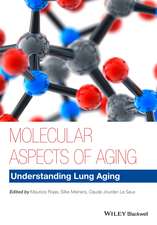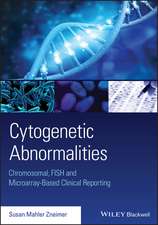The Impact of Gene Transfer Techniques in Eucaryotic Cell Biology: 35. Colloquium, 12.-14. April 1984: Colloquium der Gesellschaft für Biologische Chemie in Mosbach Baden, cartea 35
Editat de J. S. Schell, P. Starlingeren Limba Engleză Paperback – 6 dec 2011
Din seria Colloquium der Gesellschaft für Biologische Chemie in Mosbach Baden
-
 Preț: 413.07 lei
Preț: 413.07 lei -
 Preț: 412.89 lei
Preț: 412.89 lei -
 Preț: 414.80 lei
Preț: 414.80 lei - 15%
 Preț: 494.85 lei
Preț: 494.85 lei -
 Preț: 420.02 lei
Preț: 420.02 lei -
 Preț: 420.79 lei
Preț: 420.79 lei -
 Preț: 477.72 lei
Preț: 477.72 lei -
 Preț: 417.14 lei
Preț: 417.14 lei -
 Preț: 485.24 lei
Preț: 485.24 lei -
 Preț: 486.42 lei
Preț: 486.42 lei -
 Preț: 409.63 lei
Preț: 409.63 lei - 15%
 Preț: 641.20 lei
Preț: 641.20 lei - 15%
 Preț: 643.16 lei
Preț: 643.16 lei - 15%
 Preț: 635.15 lei
Preț: 635.15 lei - 15%
 Preț: 645.14 lei
Preț: 645.14 lei - 15%
 Preț: 639.08 lei
Preț: 639.08 lei - 5%
 Preț: 726.32 lei
Preț: 726.32 lei - 5%
 Preț: 714.27 lei
Preț: 714.27 lei - 18%
 Preț: 947.85 lei
Preț: 947.85 lei -
 Preț: 381.21 lei
Preț: 381.21 lei - 15%
 Preț: 643.16 lei
Preț: 643.16 lei - 15%
 Preț: 491.43 lei
Preț: 491.43 lei - 15%
 Preț: 642.68 lei
Preț: 642.68 lei - 15%
 Preț: 641.03 lei
Preț: 641.03 lei - 15%
 Preț: 638.89 lei
Preț: 638.89 lei - 15%
 Preț: 643.84 lei
Preț: 643.84 lei - 15%
 Preț: 644.49 lei
Preț: 644.49 lei - 15%
 Preț: 638.57 lei
Preț: 638.57 lei - 15%
 Preț: 635.96 lei
Preț: 635.96 lei - 15%
 Preț: 636.94 lei
Preț: 636.94 lei - 15%
 Preț: 634.32 lei
Preț: 634.32 lei -
 Preț: 413.45 lei
Preț: 413.45 lei - 15%
 Preț: 638.24 lei
Preț: 638.24 lei - 15%
 Preț: 636.94 lei
Preț: 636.94 lei - 18%
 Preț: 946.87 lei
Preț: 946.87 lei - 15%
 Preț: 641.53 lei
Preț: 641.53 lei - 15%
 Preț: 636.12 lei
Preț: 636.12 lei - 15%
 Preț: 635.80 lei
Preț: 635.80 lei - 15%
 Preț: 494.68 lei
Preț: 494.68 lei -
 Preț: 413.45 lei
Preț: 413.45 lei -
 Preț: 411.16 lei
Preț: 411.16 lei -
 Preț: 413.45 lei
Preț: 413.45 lei -
 Preț: 412.68 lei
Preț: 412.68 lei
Preț: 638.76 lei
Preț vechi: 751.47 lei
-15% Nou
Puncte Express: 958
Preț estimativ în valută:
122.26€ • 127.15$ • 102.45£
122.26€ • 127.15$ • 102.45£
Carte tipărită la comandă
Livrare economică 14-28 martie
Preluare comenzi: 021 569.72.76
Specificații
ISBN-13: 9783642700675
ISBN-10: 3642700675
Pagini: 228
Ilustrații: XII, 214 p.
Dimensiuni: 170 x 244 x 12 mm
Greutate: 0.37 kg
Ediția:Softcover reprint of the original 1st ed. 1984
Editura: Springer Berlin, Heidelberg
Colecția Springer
Seria Colloquium der Gesellschaft für Biologische Chemie in Mosbach Baden
Locul publicării:Berlin, Heidelberg, Germany
ISBN-10: 3642700675
Pagini: 228
Ilustrații: XII, 214 p.
Dimensiuni: 170 x 244 x 12 mm
Greutate: 0.37 kg
Ediția:Softcover reprint of the original 1st ed. 1984
Editura: Springer Berlin, Heidelberg
Colecția Springer
Seria Colloquium der Gesellschaft für Biologische Chemie in Mosbach Baden
Locul publicării:Berlin, Heidelberg, Germany
Public țintă
ResearchCuprins
of DNA into Animal Cells and Its Use to Study Gene Function.- Chemical DNA Synthesis and Its Applications in Eukaryotic Gene Transfer Techniques (With 13 Figures).- An Alternative Gene Cloning Method for the Isolation of Human Genes by Expression in Mouse Cell Clones (With 4 Figures).- Enhancers as Transcriptional Control Elements (With 1 Figure).- Z-DNA: Conformational Flexibility of the DNA Double (With 3 Figures).- DNA Rearrangements in Varions Organisms.- Antigenic Variation in African Trypanosomes (With 1 Figure).- The Plant Transposable Elements Tam1, Tam2 and Spm-I8 (With 6 Figures).- Mobile Genetic Elements and Their Use for Gene Transfer in Drosophila (With 4 Figures).- Genetic Engineering of Plants.- Genetic Engineering of Plants (With 6 Figures).- The Chloroplast Genome, Its Interaction with the Nucleus, and the Modification of Chloroplast Metabolism (With 1 Figure).- The T-Region of Ti Plasmid Codes for an Enzyme of Auxin Biosynthesis (With 3 Figures).- Cauliflower Mosaic Virus: A Plant Gene Vector (With 2 Figures).- of DNA into the Germ Line of Animals.- Hybrid Dysgenesis as a Gene Transfer System in Drosophila me lanogaster.- Introducing Genes into Mice and into Embryonal Carcinoma Stem Cells.- Gene Transfer in Living Organisms (With 8 Figures).- Applications of Genetic Engineering.- Genes Involved in Resistance Reactions in Higher Plants: Possible Candidates for Gene Transfer? (With 9 Figures).- Herbicide Resistance Through Gene Transfer? Biochemical and Toxicological.- Foot and Mouth Disease Virus: Genome Organization, Antigenic Variation, and New Approaches to a Safe Vaccine (With 6 Figures).- Structure, Proteolytic Processing, and Neutralization Antigenic Sites of Poliovirus (With 4 Figures).- Expression of the Foot and Mouth Disease Virus Protease inE. coli (With 5 Figures).







